Preview
Pre-Production
I planned out a generic pacing by analyzing levels from the Uncharted series. I want to make a level with the following pacing: exploration → combat → exploration →combat →find the treasure. Then I went to find some inspiration for the location and mood. I was attracted by those ancient castles on the cliffs that feel isolated and mysterious. Based on this idea, I gathered some references and went into Unreal, starting with some messing blocks. I also wrote a short story to help me determine/rationalize some details in the world settings.

Early-stage Beat Sheet
Based on the narrative, the world setting, and the pacing map, I created a sheet with beats composition at an early stage. I tried to determine the spatial language based on narrative.

Gameplay
I want the player to overcome challenges in their preferred way. I designed two critical solutions for every encounter, featuring a barbarian, speculator, and stealthy play style. On top of that, I added environmental accidents such as explosive barrels to create a more diverse experience.
Multiple Solution
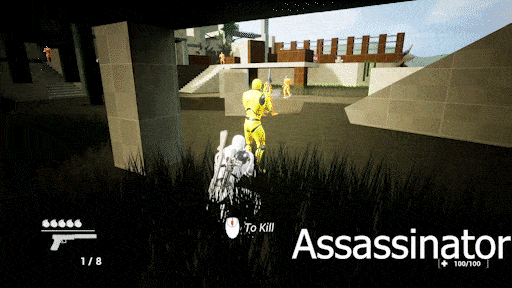
I want to reward players who spend some time exploring the level both in and out of combat. I placed treasure boxes as a reward at secret ends. I also fused the environment as a reward by providing a great scenic. For combat spaces, I reward players with tunnels that let them bypass a lot of enemies and gain vantage points.
Promote Exploration
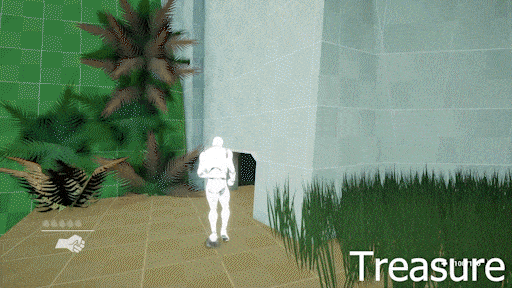
Action mechanisms like climbing, sliding, and rolling are used to adjust the pacing of the level. Since gunfight and humanoid enemies feel a bit redundant if I use them from the beginning to the end, some "environment enemy" will refresh the player.
Action Platforming
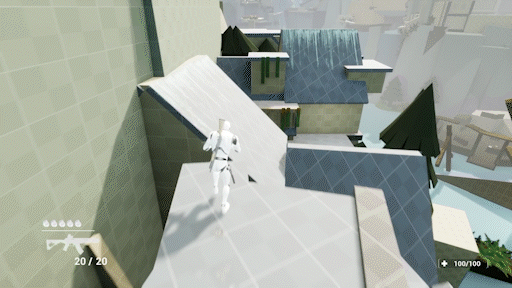
It is hard to predict the enemy patrolling path, and sometimes enemies are in the blind spot. So I created a sensing mechanism inspired by games like Hitman, TLoU, and Assassin's Creed. I set the sensing range to 20 meters so there won't be too many enemies being revealed at the same time. It also balances the mechanism and limits the information displayed on the screen, which gives the player a more clear direction on what to do next.
Enhanced Sense

Design Techniques

From space to space, I designed several "hero assets", like battleship ruins and castle ruins. I used these unique objects as landmarks to keep the player on the right track.
Landmark
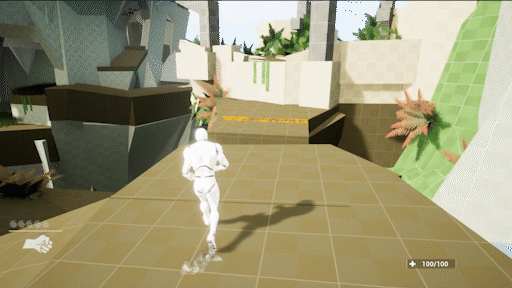
Environmental accidents push the player to a more severe situation and challenge the player from time to time. I was extra careful about the frequency and the total number of "accidents". I used them for narrative purposes only. To prevent a feeling of betrayal by the game mechanism, I let the player trigger a toe event instead of forcing the player into an event.
Environmental Accident

During the playtest I found an issue that the player had a hard time finding the correct direction here. In this case, I made this enemy spawn and walked toward the desired direction. When players spot the moving enemy, they will be attracted and guided to the correct direction.
Movements

Due to the constraint of gameplay mechanisms, I don't have a ledge climbing system. I need to tell the player where the is climbable and where to hyperjump. I used a decal to highlight the hyper jump edge while using vines to indicate a climbable area. This "language" was taught at an early stage in the game and remains the same.
Affordance

When the player enters an enemy-controlled space, I prefer to give the player a safe, ascending place to observe the layout and form a plan. This builds up the player's confidence and feel the space is more welcome.
Vantage Point

I used to have forced cutscene cameras to guide the player. However, during the playtest, I received negative feedback on this feature. So I decided to rework the level and pinch the path in a way that the player will see my desired landmark. Here I used the battleship ruin to narrow the player's view, forcing on the attraction.
Framing

I want the player to observe these two bridge ruins because it builds up a sense of connection to the other side. To drag the player's attention to these two ruins, I placed two treasure boxes in a line. When the player spots the first treasure, the player will immediately see the next one in the distance.
Breadcrumbs

To better control the flow of the level, I designed many valves in different forms. The valve can be a natural height gap or an architecture-formed gap. I also created two "environmental accidents" as a valve, but I realize it is taking away the player's control and freedom by forcing them into the "accident". I decided to keep these two right now, but if I have more time I would like to implement button-triggered "environmental accidents".
Valve

Having attractions in different layers creates a variation in depth, part of the landmark is occluded in the cliff's shadow, attracting the player's attention.
Layers
Combat Space Design

When I was designing the cover-to-cover combat space, I was thinking of enemy presentation, goals, settings, narrative, and mechanics. I planned out the front vector first, then I designed cover orientation, cover interaction, enemy/player position, entrance, and exits based on the space vectors.
Front Vector

Hallway: transitory space, encouraging movement, come and go quickly
Channel: possibility for loops
Clearing: promote movements away from its center
Fort: compromised shelter, clear boundary, break sightline
Hideout: lacks combat opportunity, shallow space, player forced to flee if enemy entered. Maintain pressure by avoiding weird exits.
Stronghold: dead end, enough opportunity, commit to the space, stand on the ground
To reproduce more combat space, I analyzed the combat space in the Uncharted series and listed some space modules to determine the combat space, in this way, I could quickly assemble the battlefield based on different vectors. For example, if there is a flank vector and I want the player to utilize the flank, I will insert a channel or a hallway.
Combat Module
Scripting
Since this project is inspired by the Uncharted series, it is never enough to have more similar mechanisms from the game. I tried to push my limits in BP scripting by creating a slide system, swinging system, cinematic camera system, monologue system, and sensing system. The more mechanism I had, the more creativity I got when designing the level. Some systems are implemented too rough and affect the level experience during the playtest so I decided to remove them.
Action Mechanisms
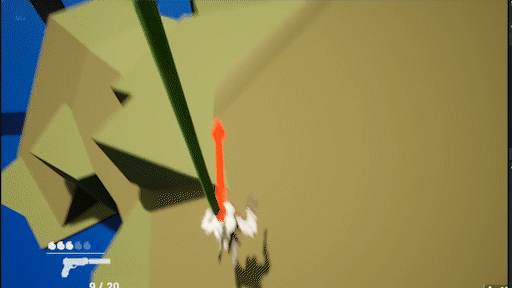
I developed a simple monologue system to give the player extra hints while providing some feedback. For example, when the player enters an enemy-controlled space, the character will alarm the player with some simple words like "careful". When I wanted to introduce the sniper to the player or highlight the correct direction, I also used the same technique.
Monologue

The sensing effect is created in the UI widget. I tried an approach that used the Niagra system but the sensing effect will have a size difference depending on its distance to the player. To create a unified scale and consider performance, I decided to create the effect in a widget. I used the "multiple sphere trace for objects" node to keep track of multiple enemies at the same time.
Sensing Mechanism


Conclusion
I learned a lot in this project in which I got to practice many techniques I learned at the same time. I also get a chance to learn more blueprint scripting skills which gives me more freedom when designing a level. Something I would like to do earlier is playtesting. I was not able to playtest in an early stage with others because I was developing new gameplay mechanisms at the same time. It slowed down my iteration process and I had to rework many parts every time I finished a new mechanism. It also taught me how dangerous to design a level when the core gameplay isn't settled yet. Furthermore, it affects me later on that it is barely possible to rework some parts. If I had more time to work, I would polish the combat logic and make the 3C more smooth to use. These are the fundamental segments I need to consider before I even start designing the level. I would also like to rework the swing mechanism and design some interesting swing + and sliding interactions. I have many thoughts in mind, but I was restricted by the 3C I have.



